
Rediscovering Japan

Rediscovering Japan
Travel (Rikugien(Tokyo)/Ebigawa(Funabashi))

by tomizuta
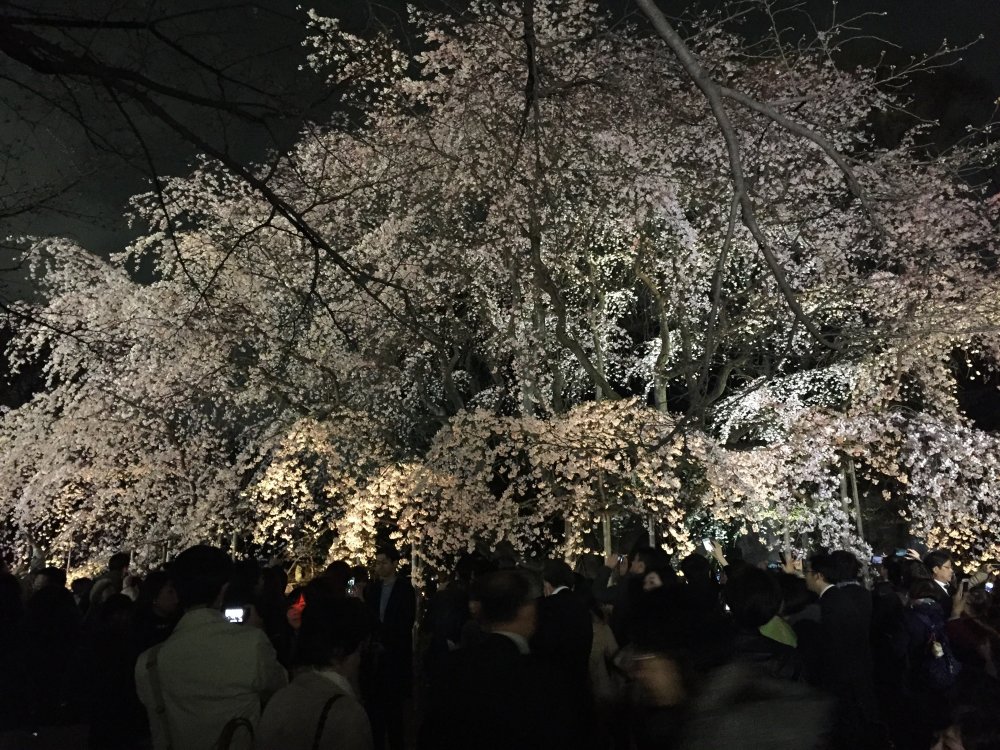
Lit up cherry blossoms at Rikugien
It was a good year to enjoy cherry blossoms. My wife kindly contributed another article.
![]()
Every year when the time to view cherry blossoms comes in spring, one of my former junior high school classmates sends around an email, inviting the former classmates to join a cherry blossom viewing party (HANAMI). It would announce that so and so would be securing a picnicking spot first thing in the morning, and invite all to bring a dish or two to share with everybody around lunchtime.
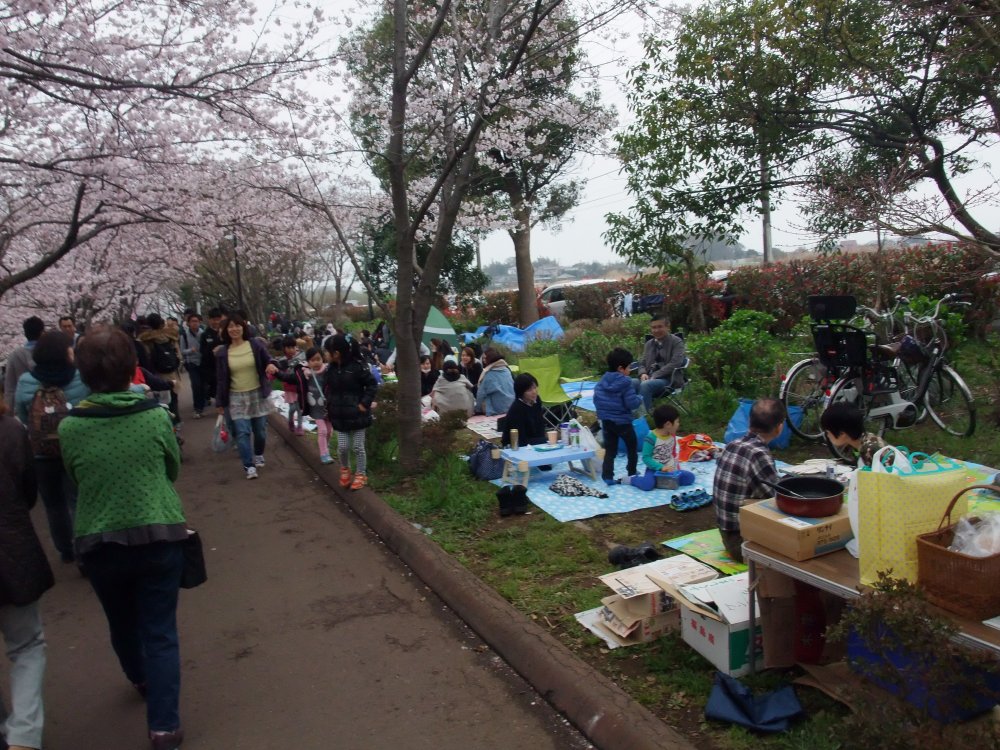
Picknicking under the cherry blossoms
Nowadays perhaps the tradition may be less customary out of concern of
power harassment, but a while ago securing an ideal spot for fellow workers
to enjoy a HANAMI outing in the evening was an important first assignment
for a new recruit when he or she joined the company in April. So many people
enjoy HANAMI, that you need to secure a place from the morning. You bring
a large blue picnic sheet which you lay out under the cherry trees with
the prettiest blooms. Then you lie down and read a book to keep the place
until everyone arrives in the evening.
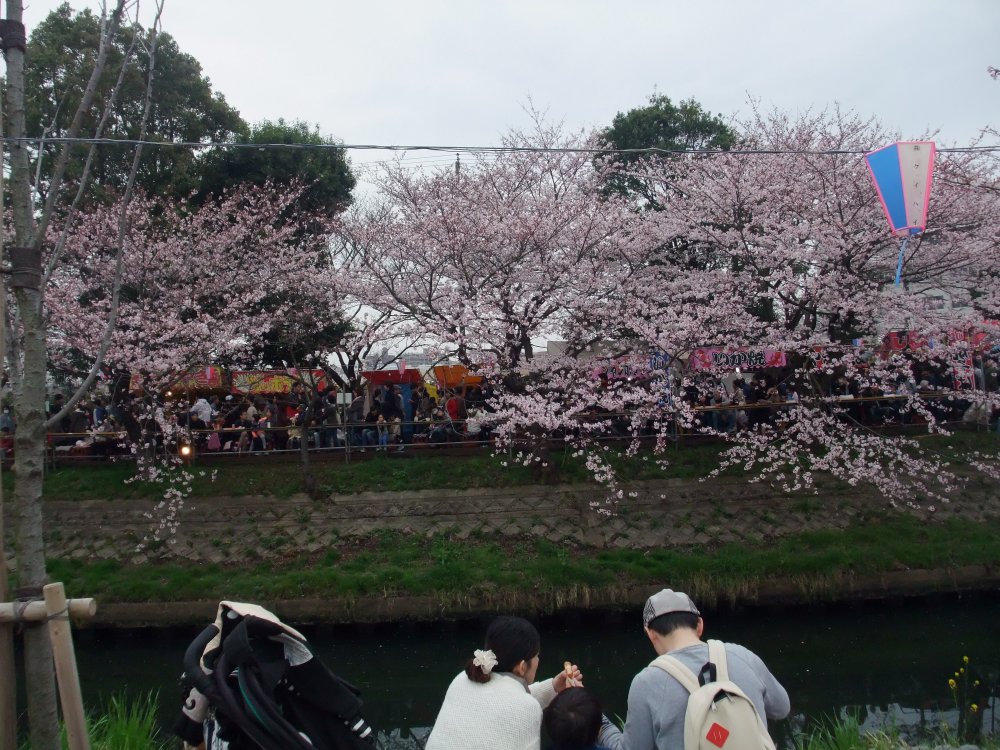
Note the food and game shops on the opposite side
The main purpose of HANAMI now, is to have a good time with your friends eating, drinking and perhaps a bit of karaoke, or to genuinely enjoy a view of the cherry blossoms noted for its cherry trees. The number of days good for HANAMI is very short, and the day from which the flowers start to bloom will vary from year to year depending on the spring weather. If it is windy or you have heavy rain after full bloom, the hanami period can be very short. If you wanted to go to HANAMI at weekends, then youfd be lucky to have one or two chances a year. So once you are in March, you will hear blooming date projections on the news every day. The approach of the cherry blossoms, usually from the south to the north is called hanami front, and the Meteorogical Agency announces its projections of the HANAMI front as part of their daily weather news.
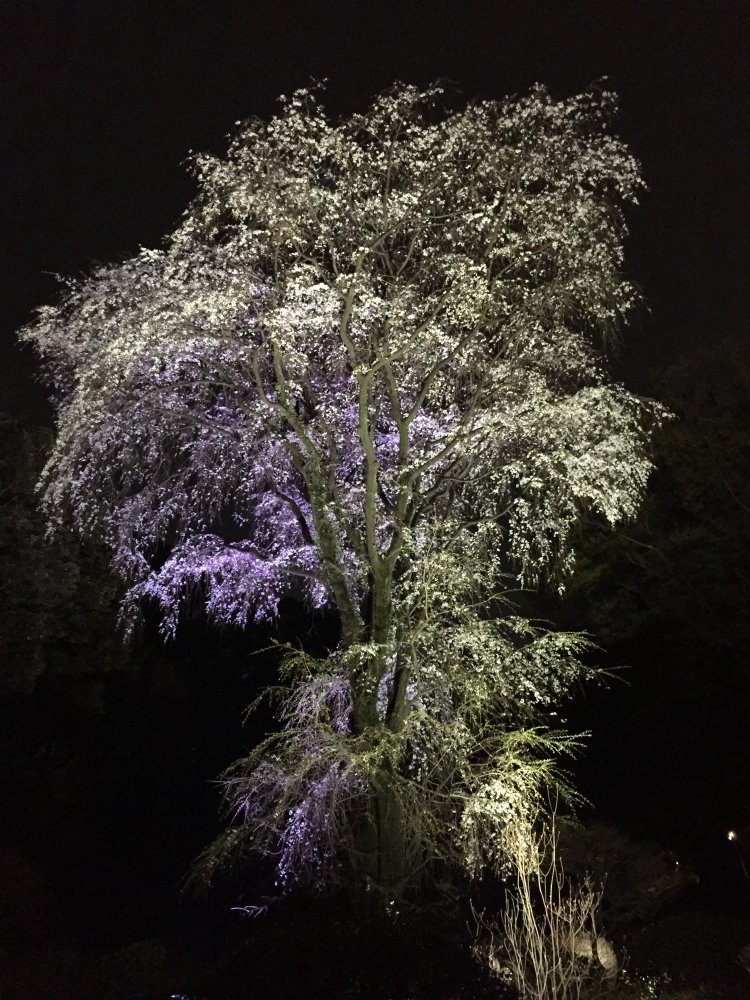
The YOZAKURA another lit up cherry blossom at Rikugien
This year, I went to see the famous weeping cherries in full bloom at Rikugien (near Komagome JR station in Tokyo) with my mother. The yozakura (cherry blossoms in the evenings) were lit up. There were many HANAMI goers that evening, and there was a 100 metre queue to the ticket office by the park walls. It was a joy killer that an attendant with a microphone would be at every point that one would wish to take a moment to enjoy the view and they kept shouting gplease keep walking,h but perhaps it was a necessity for everyonefs safety. The HANAMI goers minded their behavior very well. They just viewed and did not reach out to the flowers, and took photos. They all seemed to be mesmerized by the beauty of the blooms. Although it would be good to monopolize the cherry blossoms for yourself, I found it equally enjoyable to blend myself with all my fellow flower admirers.
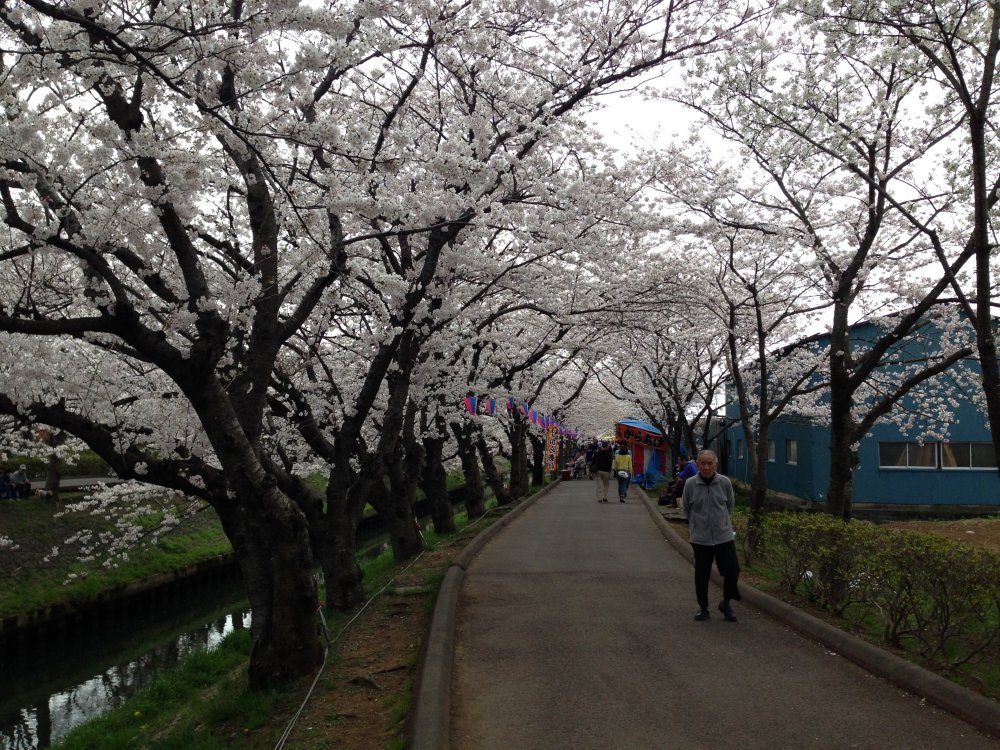
Cherry blossom arcade at Ebigawa (Funabashi)
I went to visit a cherry blossom arcade on both banks of Ebigawa (River
Ebi) in Funabashi, Chiba. Funabashi is an old city, and the name can be
found in historical documents dating back to the 12th century. In the Edo
period it was a lodging village on the Narita kaido as well as being a
fishing village on the Tokyo Bay. Ebigawa is a short river of about 3 kilometres.
The quality of the water has improved considerably in the past 30 years,
and the city planted cherry blossom trees on the banks for one kilometer.
We visit the place at least once every year during the season. Itfs always
fun to see the many food and game stores on the banks that are set up for
only a week or so to serve HANAMI visitors. If it is not a good day for
hanami, the storekeeper could give you a very generous serving for your
ordered food, saying gDonft worry, I wonft be able to sell all my food
today.h Itfs only once every year, but if you fail to find a regular food
shop, you worry why the shop owner is not there. This year, it had become
even more international, such that we found two stores offering Turkish
kebabs.
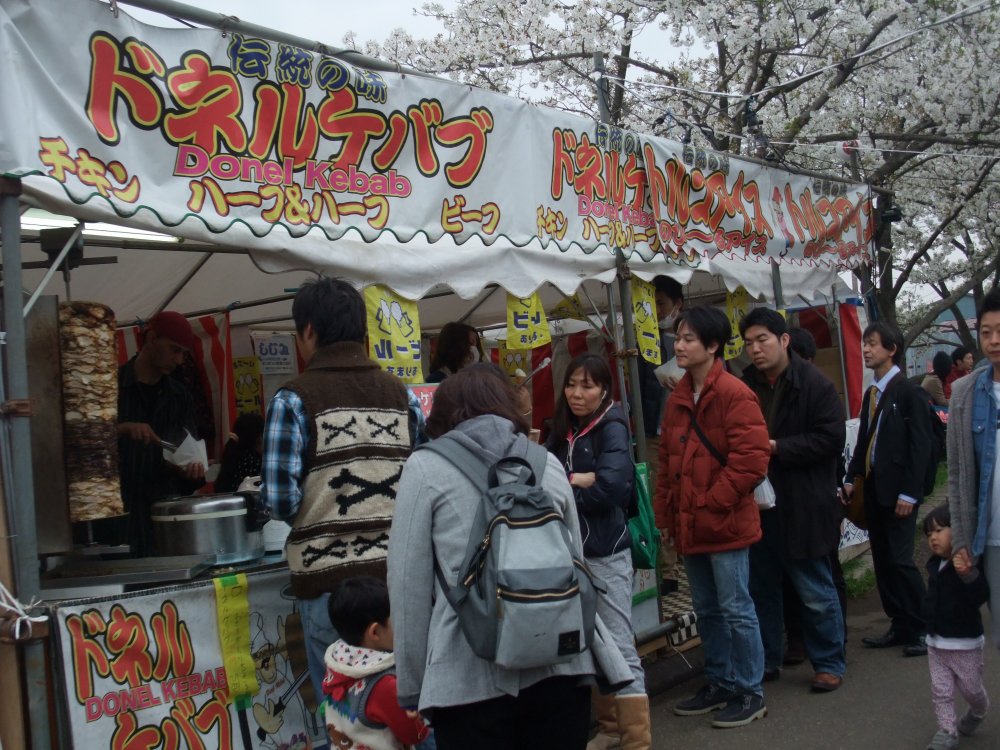
HANAMI goers queing in front of the Kebab shops at Ebigawa
A couple of years ago, the daughter of my British friend told me that she
was contemplating visiting Japan to enjoy HANAMI, and asked what days would
be best to visit. I asked her if she just wished to enjoy the cherry blossoms
or go to a HANAMI party. She said that she wanted to see the cherry blossoms
as well as the many HANAMI goers. There werenft that many foreign HANAMI
lovers then, but this year the news was that Ueno Park was full of HANAMI
visitors from abroad.
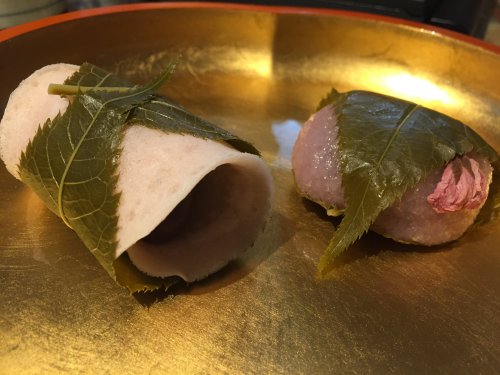
SAKURA-MOCHI. Kantou style Choumeiji (left) and Kansai style Doumyouji (right) Note the cherry leaves.
There is a saying in Japan, HANA YORI DANGO (sweet dumpling is better than flower, meaning that cherry blossoms cannot fill your stomach). HANAMI goers eventually lose attention of the flowers in preference for the feast. There are WAGASHI (Japanese sweets) for every season, and one can feel the change of the season from the WAGASHI. Above, SAKURA-MOCHI is the favorite WAGASHI of HANAMI period.
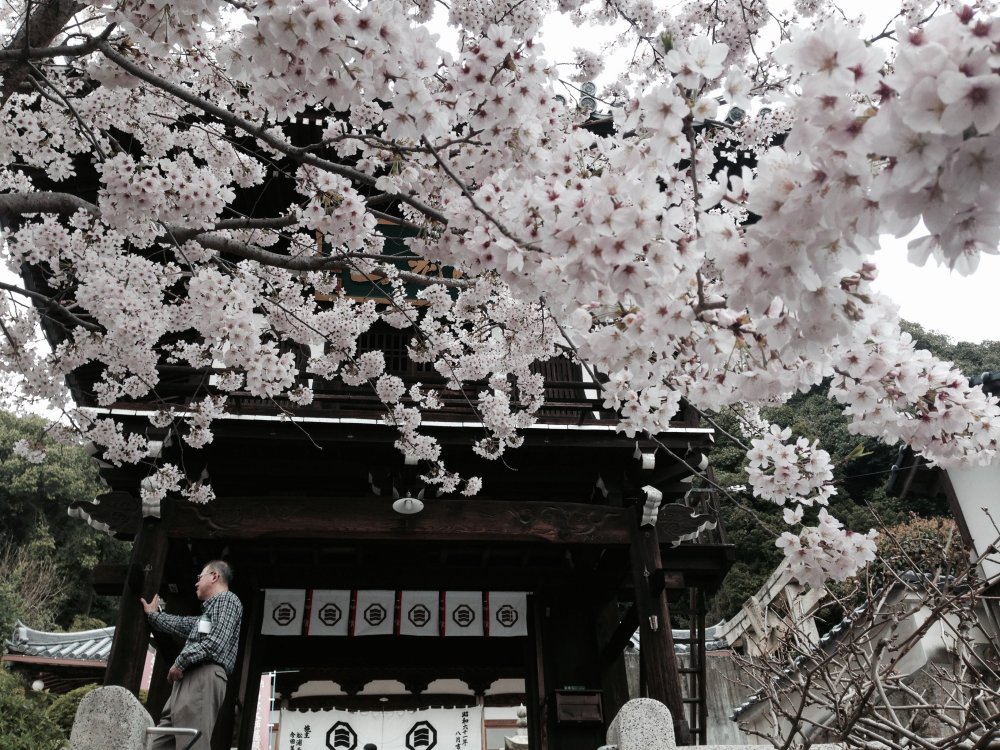
Cherry blossoms at Saihouji, Takehara, Hiroshima.